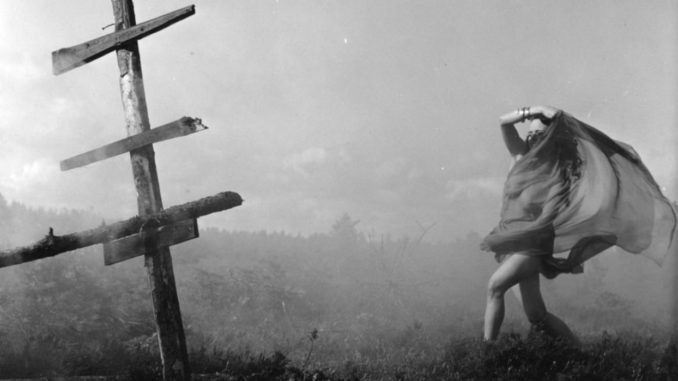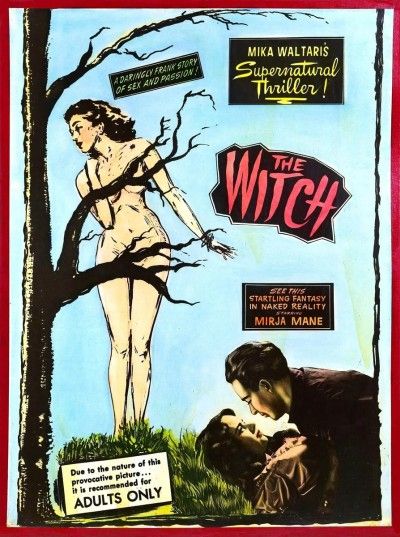
Rating: B
Dir: Roland af Hällström
Star: Mirja Mane, Toivo Mäkelä, Hillevi Lagerstam, Sakari Jurkka
a.k.a. Noita palaa elämään and The Witch
After being rather unimpressed by the previous example of fifties Scandinavian horror Lake of the Dead, this was a very welcome surprise. It’s an interesting bridge between the earlier horrors of Val Lewton, and the ones to come from Mario Bava. In particular, you could describe this as a descendant of the original Cat People, and the ancestor of Black Sunday. It takes place in the Finnish countryside where archaeologist Hannu (Mäkelä) and his wife Greta (Lagerstam) find a body with an aspen stake driven through its heart. Local lore has it, this was a witch, buried alive centuries ago with impalement the only way to keep her down.
Naturally, they don’t believe a word of it, removing the stake and taking the well-preserved corpse off to be studied. The locals are unimpressed, and predict doom. Shortly after, in the middle of a storm, a young woman (Mane) is found, lying naked in the grave, knowing little except her name, Birgit. She joins the couple in the manor where they’re staying, courtesy of the local baron. But it soon becomes clear that all the men in the house, including Hannu and the baron’s son Veikko (Jurkka), are falling under the new arrival’s spell. Other weird events follow – a horse breaks its leg, a cow gives blood in its milk – and the locals are now seriously unimpressed. Something needs to be done, regardless of how Hannu and crew feel.
 Considering the era, this is strikingly mature, with Mane one of the most clothes-averse genre characters, this side of Mathilda May in Lifeforce. We’re talking actual albeit brief breasts, people, which would have been impossible for the era for a “proper” movie made in the US or UK, She gives a multi-faceted performance. At some points, Birgit is a wide-eyed innocent with no idea what’s going on, like Simone Simon in Cat People. At others, she’s a cunning seductress, or an evil sorceress, luring men to their doom in the marsh, and teleporting around using her occult powers (actually, jump cuts of varying effectiveness). Mane is the glue that binds everything together, and nobody else, male or female, makes as much of an impression.
Considering the era, this is strikingly mature, with Mane one of the most clothes-averse genre characters, this side of Mathilda May in Lifeforce. We’re talking actual albeit brief breasts, people, which would have been impossible for the era for a “proper” movie made in the US or UK, She gives a multi-faceted performance. At some points, Birgit is a wide-eyed innocent with no idea what’s going on, like Simone Simon in Cat People. At others, she’s a cunning seductress, or an evil sorceress, luring men to their doom in the marsh, and teleporting around using her occult powers (actually, jump cuts of varying effectiveness). Mane is the glue that binds everything together, and nobody else, male or female, makes as much of an impression.
The rest of the film is more of a mixed bag. There are some comic relief elements early on that, frankly, don’t work. But I did like the pragmatic Baron Hallberg (Aku Korhonen), a cheerfully unrepentant chauvinist, reputedly responsible for fathering half the village children. “What’s so difficult to comprehend?”, he grumbles. “All women are witches!” It was interesting to see a film where rationality proved entirely useless in dealing with the threat, because science simply refuses to accept its existence. By the end though, Hannu is largely reduced to a babbling idiot by his experiences, although the jury remains out on the true nature of what happened. Maybe Birgit was just a swimmer who got caught in a storm, after all…
